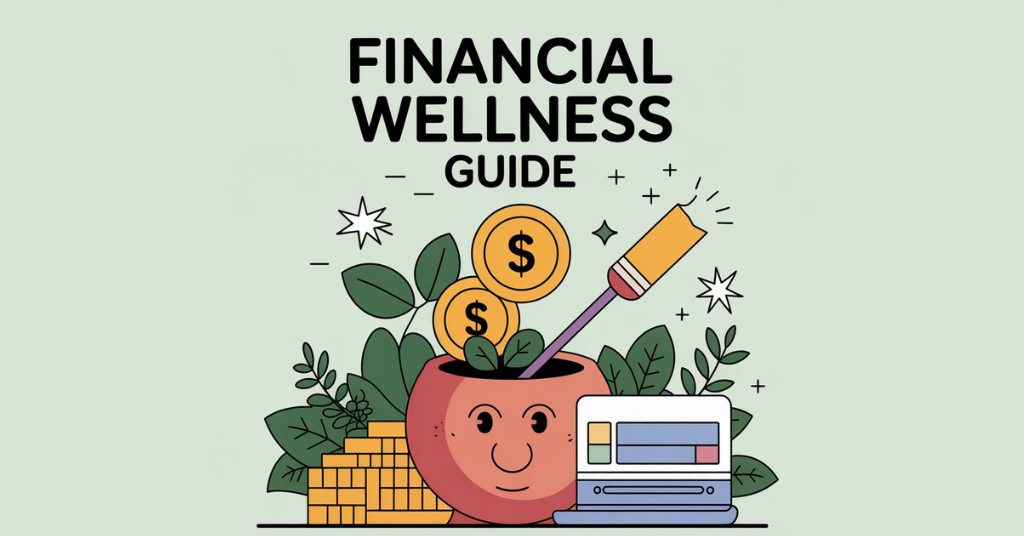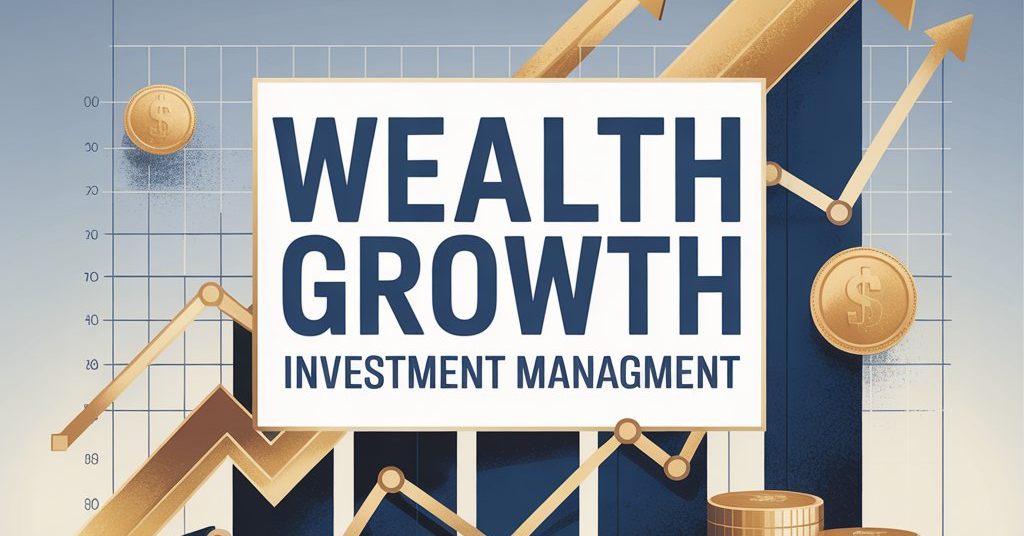Money plays a major role in everyone’s life. It impacts our peace of mind, health, relationships, and future plans. Yet, many people in the USA feel stressed about their finances—whether it’s student loans, credit card bills, rising living costs, or saving enough for retirement. This is where the idea of financial wellness comes in.
Financial wellness means having control over your money, the ability to handle unexpected expenses, and the confidence to plan for the future without constant stress. It is not just about how much you earn but how wisely you manage it. This blog will serve as your Financial Wellness Guide Achieving Financial Balance, with clear steps, practical tips, and real calculations to help you take control of your money.
What is Financial Wellness?
Financial wellness is the balance between your current financial needs and future goals. A person with good financial wellness can:
- Pay monthly bills comfortably.
- Handle emergencies without debt stress.
- Save and invest for future goals (college, retirement, home).
- Live without constant money anxiety.
Example: Imagine two friends, John and Sarah, both earning $4,500 per month. John spends everything and uses credit cards for emergencies. Sarah follows a budget, saves 20% each month, and has insurance. If both face a $1,000 car repair, John may sink deeper into debt, while Sarah uses her emergency fund stress-free. That’s the difference financial wellness makes.
Why Financial Balance Matters in the USA
- High Debt Levels: The average American household has over $7,000 in credit card debt.
- Rising Costs: Healthcare, housing, and education costs continue to climb.
- Low Savings: About 57% of Americans cannot cover a $1,000 emergency with savings.
- Retirement Gap: Many people underestimate how much they’ll need to retire comfortably.
Financial balance is not just about survival—it’s about creating security and freedom.
Key Elements: Financial Wellness Guide Achieving Financial Balance
Financial wellness has several pillars. Let’s break them down.
| Pillar | Why It Matters | Example |
| Budgeting | Keeps income and expenses in control. | 50/30/20 rule. |
| Debt Management | Reduces stress and frees future cash. | Avalanche vs Snowball method. |
| Emergency Fund | Covers unexpected costs. | 3–6 months of expenses. |
| Investing | Builds long-term wealth. | 401(k), IRA, stocks, bonds. |
| Insurance | Protects against risks. | Health, life, disability. |
| Mindset | Encourages consistent, smart choices. | Delayed gratification, goal setting. |
Step 1: Assess Your Current Financial Situation
Before improving, you need a clear picture of where you stand.
- List Income & Expenses: Note monthly salary, side income, and all expenses.
- List Assets & Liabilities: Include savings, retirement accounts, real estate, and debts.
- Calculate Net Worth:

Example:
Assets = $50,000 (401k) + $20,000 (savings) + $15,000 (car) = $85,000
Liabilities = $30,000 (student loan) + $10,000 (car loan) + $5,000 (credit card) = $45,000
Net Worth = $85,000 − $45,000 = $40,000
- Debt-to-Income Ratio (DTI):

If your debts are $600 per month and income is $4,000:
DTI = (600 ÷ 4000) × 100 = 15% (Healthy: under 36%).
Step 2: Create a Budget That Works
A budget ensures money flows toward goals, not waste.
- 50/30/20 Rule:
- 50% Needs (housing, food, transport, insurance).
- 30% Wants (entertainment, shopping, vacations).
- 20% Savings & Debt Repayment.
- 50% Needs (housing, food, transport, insurance).
Example: Income = $5,000/month.
- Needs = $2,500
- Wants = $1,500
- Savings/Debt = $1,000
Use apps like Mint, YNAB, or simple spreadsheets.
Step 3: Build Savings & Emergency Fund
Emergencies happen—job loss, car repairs, medical bills. Without savings, people turn to high-interest debt.
- Emergency Fund Goal: 3–6 months of essential expenses.
- Example: Monthly expenses = $3,000. Target = $9,000–$18,000 saved.
- Start small: even $50/week grows to $2,600/year.
Set automatic transfers to savings to build consistency.
Step 4: Manage and Eliminate Debt
Debt eats future wealth. Credit card APRs in the USA average 18–25%, meaning balances grow quickly.
Two Debt Payoff Strategies
- Avalanche Method: Pay highest interest first → saves money long-term.
- Snowball Method: Pay smallest debt first → builds motivation.
Example:
- Credit Card: $3,000 @ 18%
- Student Loan: $25,000 @ 5%
- Car Loan: $10,000 @ 7%
Using Avalanche: focus extra payments on the credit card, then move to car loan, then student loan.
Step 5: Start Investing Early
Saving is good, but investing builds wealth through compounding.
Retirement Accounts
- 401(k): Employer-sponsored plan, often with a match.
- Roth IRA: Post-tax contributions, tax-free growth.
- Traditional IRA: Pre-tax contributions, tax-deferred growth.
Example of Compounding Growth:
If you invest $5,000 yearly for 30 years at 6%:
FV=P×(1+r)n−1rFV = P \times \frac{(1+r)^n – 1}{r}FV=P×r(1+r)n−1
= 5000 × ((1.06³⁰ − 1) ÷ 0.06)
= 5000 × (4.7435 ÷ 0.06)
= 5000 × 79.06
= $395,300
This shows why starting early matters.
Step 6: Protect Yourself with Insurance
Unexpected events can wipe out savings. Insurance provides security.
- Health Insurance: Essential in the USA due to high medical costs.
- Life Insurance: Protects dependents.
- Disability Insurance: Replaces income if unable to work.
- Property Insurance: Homeowners/renters coverage for assets.
Review coverage annually. Don’t overpay, but don’t leave gaps.
Step 7: Improve Your Financial Mindset
Mindset influences behavior more than numbers.
- Avoid Impulse Spending: Try the 24-hour rule before purchases.
- Set SMART Goals: Specific, Measurable, Achievable, Relevant, Time-bound.
- Celebrate Milestones: Like paying off a card or hitting a savings goal.
- Stay Educated: Follow reliable finance blogs, podcasts, or courses.
Step 8: Sample Financial Plan (Case Study)
Let’s apply this to a 30-year-old professional in the USA.
Income: $60,000/year ($5,000/month).
Expenses: $3,500/month.
Debts: $3,000 credit card, $25,000 student loan.
Plan
- Budget: 50/30/20 rule.
- Emergency Fund Target: $10,500 (3 months). Save $500/month → 21 months to build.
- Debt Repayment: Pay $500 extra toward credit card → clear in ~6 months.
- Retirement: Contribute 10% of salary ($6,000/year) + employer match 4% ($2,400).
- Investing Growth: At 7% return, this could grow to over $1 million by age 65.
This structured plan gives balance: security now and wealth later.
Step 9: Monitor and Adjust Regularly
Life changes—so must your finances.
- Monthly: Review budget & spending.
- Quarterly: Track net worth and debt progress.
- Yearly: Adjust savings goals, review insurance, rebalance investments.
Red Flags: Rising credit card debt, missed payments, no emergency fund, or feeling constant stress about money.
Conclusion
Financial wellness is not about being rich—it’s about being in control. By budgeting smartly, managing debt, saving consistently, investing early, and protecting yourself with insurance, you create stability and peace of mind.
This Financial Wellness Guide: Achieving Financial Balance has shown that with the right plan, examples, and mindset, anyone can build financial health step by step. Start today, stay consistent, and watch how your financial life transforms into one of balance, security, and freedom.



